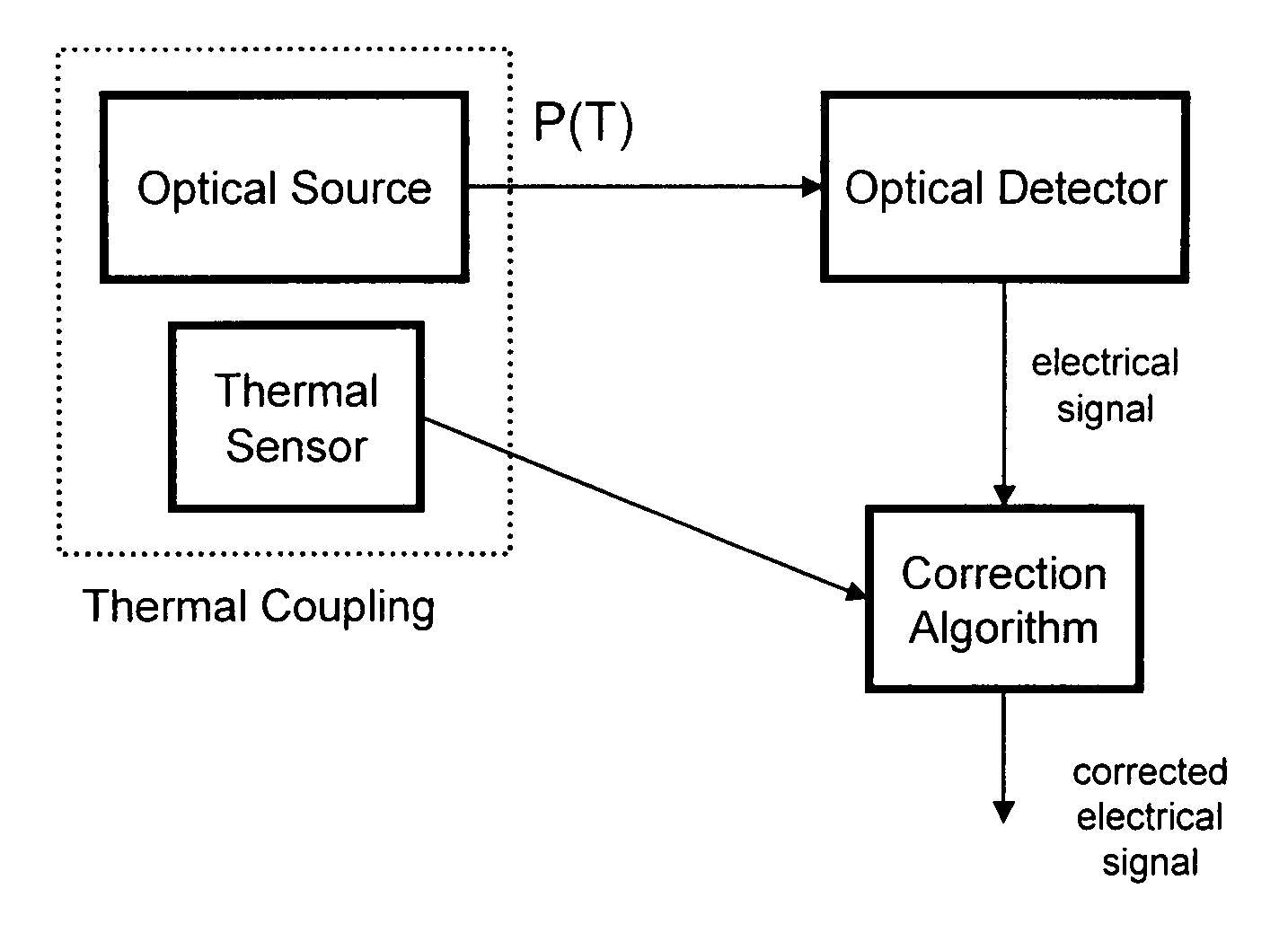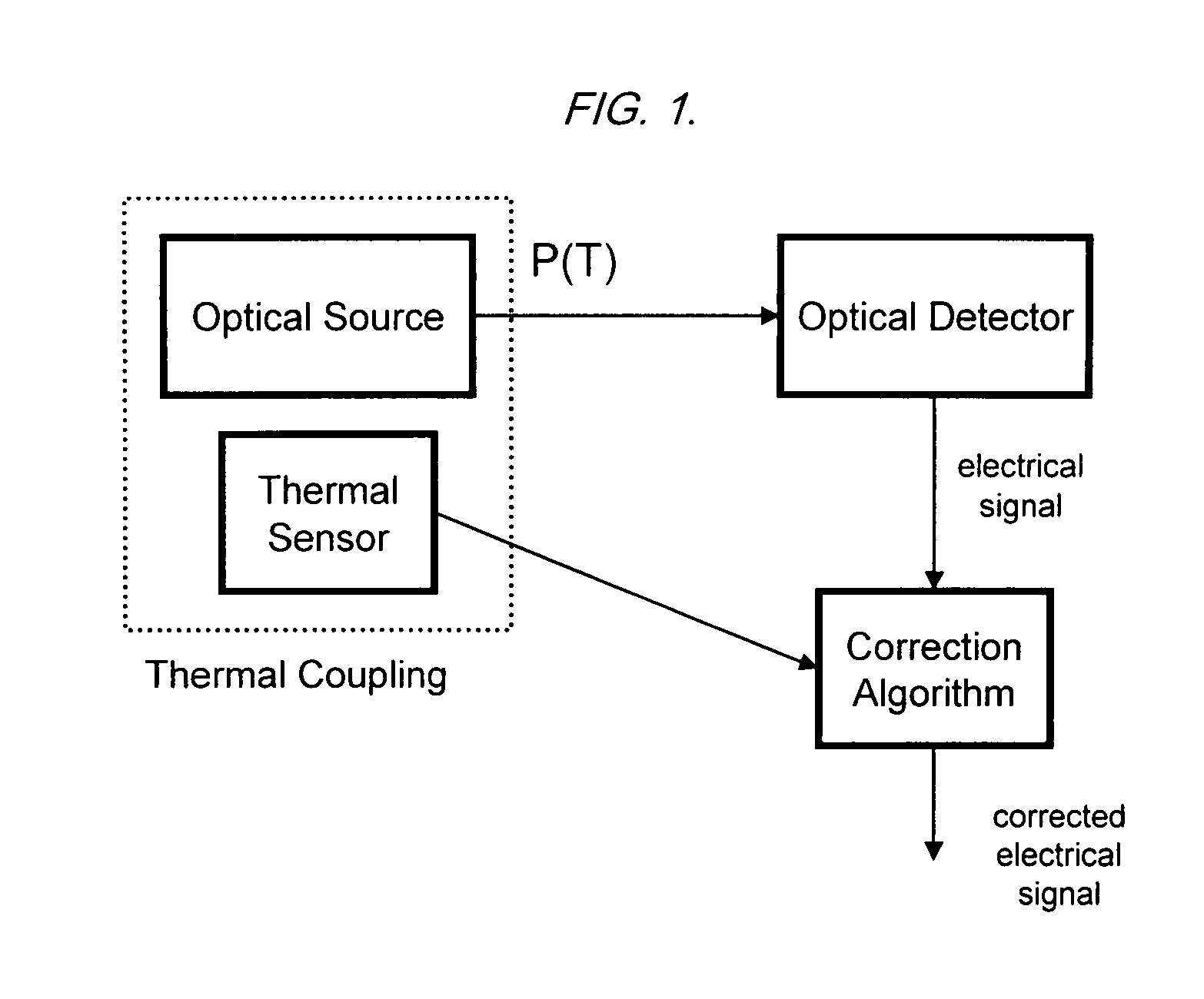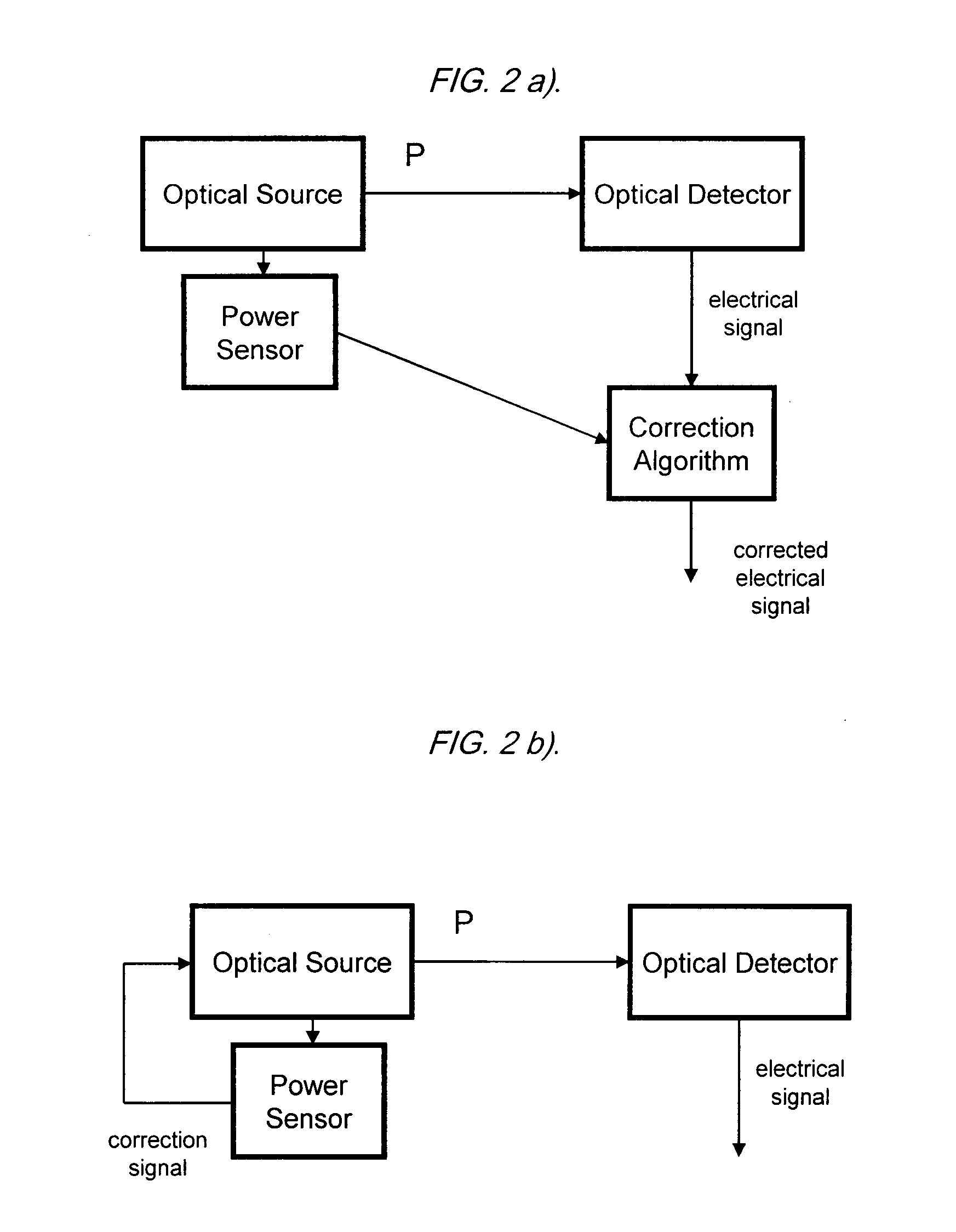System and method for laser temperature compensation
a laser temperature compensation and temperature compensation technology, applied in the direction of lasers, semiconductor lasers, electric discharge lamps, etc., can solve the problems of inconvenient direct monitoring of optical power or wavelength, difficult or even impossible to achieve proximity, inaccurate,
- Summary
- Abstract
- Description
- Claims
- Application Information
AI Technical Summary
Problems solved by technology
Method used
Image
Examples
Embodiment Construction
[0034]As shown in FIG. 6, the optical semiconductor device, i.e. the laser or LED optical source is driven by an input signal, (normally current); and produces an output power PS which is primarily a function of the input signal and the ambient temperature (S,T). As the optical power travels through an optically dense sample medium the transmitted power, as measured by a photodetector, is affected by one or more mechanisms such as absorption, scattering, and / or reflection in the sample medium. The result is a power at the detector, Pd which is less than, or (in the absence of absorption, scattering or reflection) equal to the source power. An “absorbance unit” may be associated with the sample medium defined by “optical loss” or “optical density” such that the “absorbance unit” or AU is given by log10(PS / Pd).
[0035]The present invention uses the optical semiconductor device itself as a temperature sensor, as shown in FIG. 7. This approach ensures that the temperature of the optical d...
PUM
 Login to View More
Login to View More Abstract
Description
Claims
Application Information
 Login to View More
Login to View More - R&D
- Intellectual Property
- Life Sciences
- Materials
- Tech Scout
- Unparalleled Data Quality
- Higher Quality Content
- 60% Fewer Hallucinations
Browse by: Latest US Patents, China's latest patents, Technical Efficacy Thesaurus, Application Domain, Technology Topic, Popular Technical Reports.
© 2025 PatSnap. All rights reserved.Legal|Privacy policy|Modern Slavery Act Transparency Statement|Sitemap|About US| Contact US: help@patsnap.com



